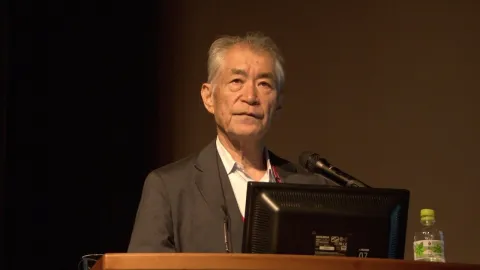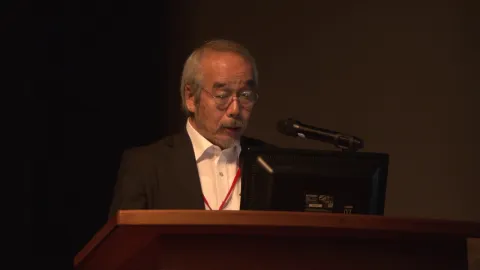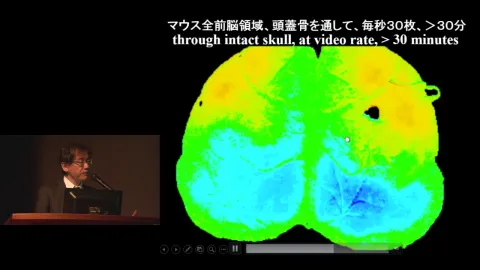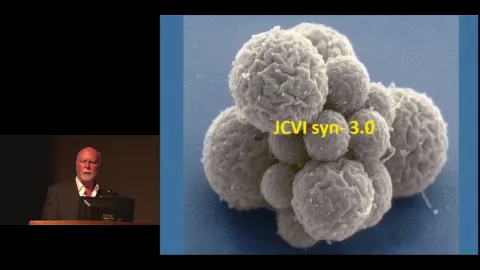
3rd Kyoto University-Inamori Foundation Joint Kyoto Prize Symposium
http://kuip.hq.kyoto-u.ac.jp/
https://ocw.kyoto-u.ac.jp/en/opencourse-en/158
July 9, 2016
[Biotechnology and Medical Technology]
Emmanuelle Charpentier
Director, Max Planck Institute for Infection Biology
Professor, The Laboratory for Molecular Infection Medicine Sweden, Umeå University
Title of Presentation
“The transformative CRISPR-Cas9 genome engineering technology: lessons learned from bacteria”
The RNA-programmable CRISPR-Cas9 system has recently emerged as a transformative technology in biological sciences, allowing rapid and efficient targeted genome editing, chromosomal marking and gene regulation. In this system, the endonuclease Cas9 or catalytically inactive Cas9 variants are programmed with single guide RNAs (sgRNAs) to target site-specifically any DNA sequence of interest given the presence of a short sequence (Protospacer Adjacent Motif, PAM) juxtaposed to the complementary region between the sgRNA and target DNA. The system is efficient, versatile and easily programmable.
Originally, CRISPR-Cas is an RNA-mediated adaptive immune system that protects bacteria and archaea from invading mobile genetic elements (phages, plasmids). Short crRNA (CRISPR RNA) molecules containing unique genome-targeting spacers commonly guide Cas protein(s) to invading cognate nucleic acids to affect their maintenance. CRISPR-Cas has been classified into three main types and further subtypes. CRISPR-Cas9 originates from the type II CRISPR-Cas system that has evolved unique molecular mechanisms for maturation of crRNAs and targeting of invading DNA, which my laboratory has identified in the human pathogen Streptococcus pyogenes. During the step of crRNA biogenesis, a unique CRISPR-associated RNA, tracrRNA, base pairs with the repeats of precursor-crRNA to form anti-repeat-repeat dual-RNAs that are cleaved by RNase III in the presence of Cas9 (formerly Csn1), generating mature tracrRNA and intermediate forms of crRNAs. Following a second maturation event, the mature dual-tracrRNA-crRNAs guide the endonuclease Cas9 to cleave cognate target DNA and thereby affect the maintenance of invading genomes. We have shown that the endonuclease Cas9 can be programmed with sgRNAs mimicking the natural dual-tracrRNA-crRNAs to target site-specifically any DNA sequence of interest. Based on this harnessing principle, we proposed that RNA-programmable Cas9 could be useful as a versatile system for genome editing in cells of all three kingdoms of life for biotechnological, biomedical and gene-therapeutic purposes. As demonstrated by a large number of studies published over the last 2 years, DNA targeting by CRISPR-Cas9 has been quickly and broadly adopted by the scientific community to edit and silence genomes in a large variety of cells and organisms, including human cells, plants and mice. I will discuss the biological roles of CRISPR-Cas9, the mechanisms involved, the evolution of type II CRISPR-Cas components in bacteria and the applications of CRISPR-Cas9 as a novel genome engineering technology.
この動画は、クリエイティブ・コモンズ・ライセンス“Attribution-NonCommercial-ShareAlike (CC BY-NC-SA)”が付与されています。 私的学習のほか非営利かつ教育的な目的において、適切なクレジット表記をおこなうことで、共有、転載、改変などの二次利用がおこなえます。 コンテンツを改変し新たに教材などを作成・公開する場合は、同じライセンスを継承する必要があります。 詳細は、クリエイティブ・コモンズのウェブサイトをご参照ください。
- 部局
- 分野
- タグ





















